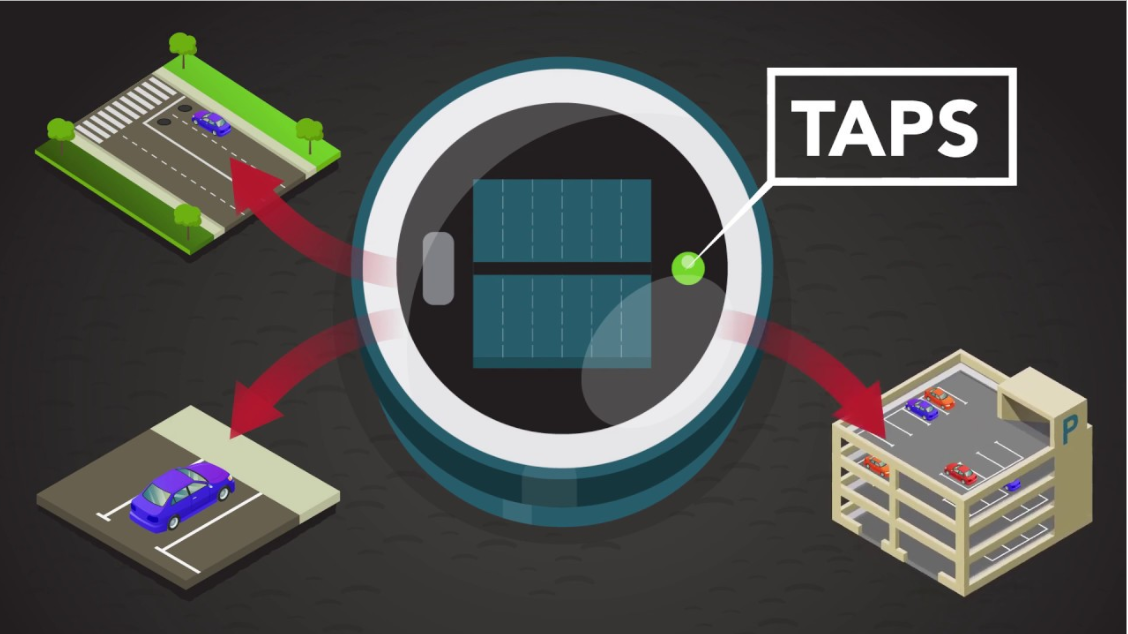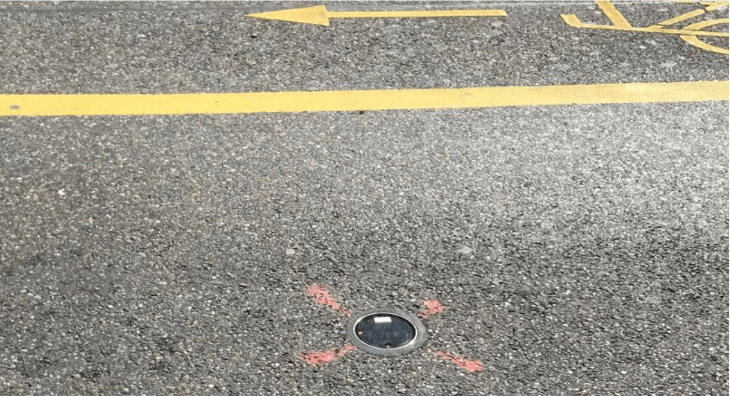
LTS AG has developed a system for Smart Parking: TAPS. It provides for ground sensors to be embedded in the parking space. These detect whether or not there is a vehicle above them. The information can then be used to efficiently guide cars to free parking spaces.
What are the benefits of ground sensors in the parking lot?
Just about every motorist traveling in a large city has to look for a parking space at their destination. This process takes more or less time, but in any case has the following negative effects:
When searching for a parking space, the car emits additional exhaust gases.
It also consumes fuel unnecessarily, which increases costs for the owner.
Cars looking for a parking space account for no small part of city traffic. This results in more frequent traffic jams.
The driver is annoyed, which is detrimental to his concentration. The risk that an accident will occur increases.
Once the parking space is found, it may be located far from the destination. The driver then has a longer way to go on foot.
The search for a parking space is therefore detrimental to the environment and to the numerous motorists who travel in Swiss cities. Therefore, intelligent control of search traffic is urgently needed. It is best realized with ground sensors in the parking lot. The system they belong to guides vehicles to free parking spaces.
The TAPS sensors from LTS AG can be used both in public parking lots and in parking garages. In the latter, they can be connected to the control system, which indicates to drivers by light signal whether parking spaces are free or occupied.
Ground sensors in the parking lot can also be used to control unauthorized parking. They record how long a vehicle is parked in a paid parking space. In this way, they register whether the parking time has been exceeded. The police can be notified immediately, who then issue a fine or have the vehicle towed away. Parking spaces reserved for law enforcement or emergency services can also be effectively monitored with the sensors. In this way, action can be taken against illegally parked vehicles.
How to install the ground sensors in the parking lot?

To make a TAPS sensor to install, all that needs to be done is to drill a hole. Compared to induction loops, where the asphalt has to be torn up over a large area, this is relatively little effort. In addition, the work takes only 30 minutes and is therefore much shorter. This means that the parking lot only has to be closed for a short time. The fact that the sensors are energy-autonomous also contributes to the rapid installation. This means that no cables need to be laid. Instead, they supply themselves with energy during operation. Data transmission and the supply of updates are also wireless.
How does the data communication work?

The TAPS sensors detect whether a parking space is free or occupied. This is done electromagnetically. The information is sent by the ground sensors in the parking space to the TAPS Gateway This collects the data and forwards it as the customer wishes. Both a transfer to a cloud server and a specific infrastructure are possible.
Various options are available for the transfer. For example, the data can be transferred via WiFi, LTE, Bluetooth or Sigfox. Various optical interfaces are also supported. Customers of LTS AG also receive access to the TAPS Software Suite. It presents the data clearly and in real time. Thus, far-reaching analyses about the use of parking spaces are possible. For example, it is possible to view which parking spaces are used particularly frequently or for a particularly long time.
These findings then provide the basis for even more efficient parking management.
Who are the stakeholders for ground sensors in the parking lot?
TAPS technology is designed to meet the demands of diverse users. These include cities and municipalities that are exposed to increasing road traffic. The system is also worthwhile for companies that want to quickly direct employees and visitors to free parking spaces on company premises. Parking managers, property managers and parking service providers also find the TAPS technology invaluable. The same applies to operators of airports, hotels and service areas. The sensors can also be used to monitor parking spaces in front of charging stations. They can detect whether a parked vehicle is actually being charged or is parked illegally.




)
)